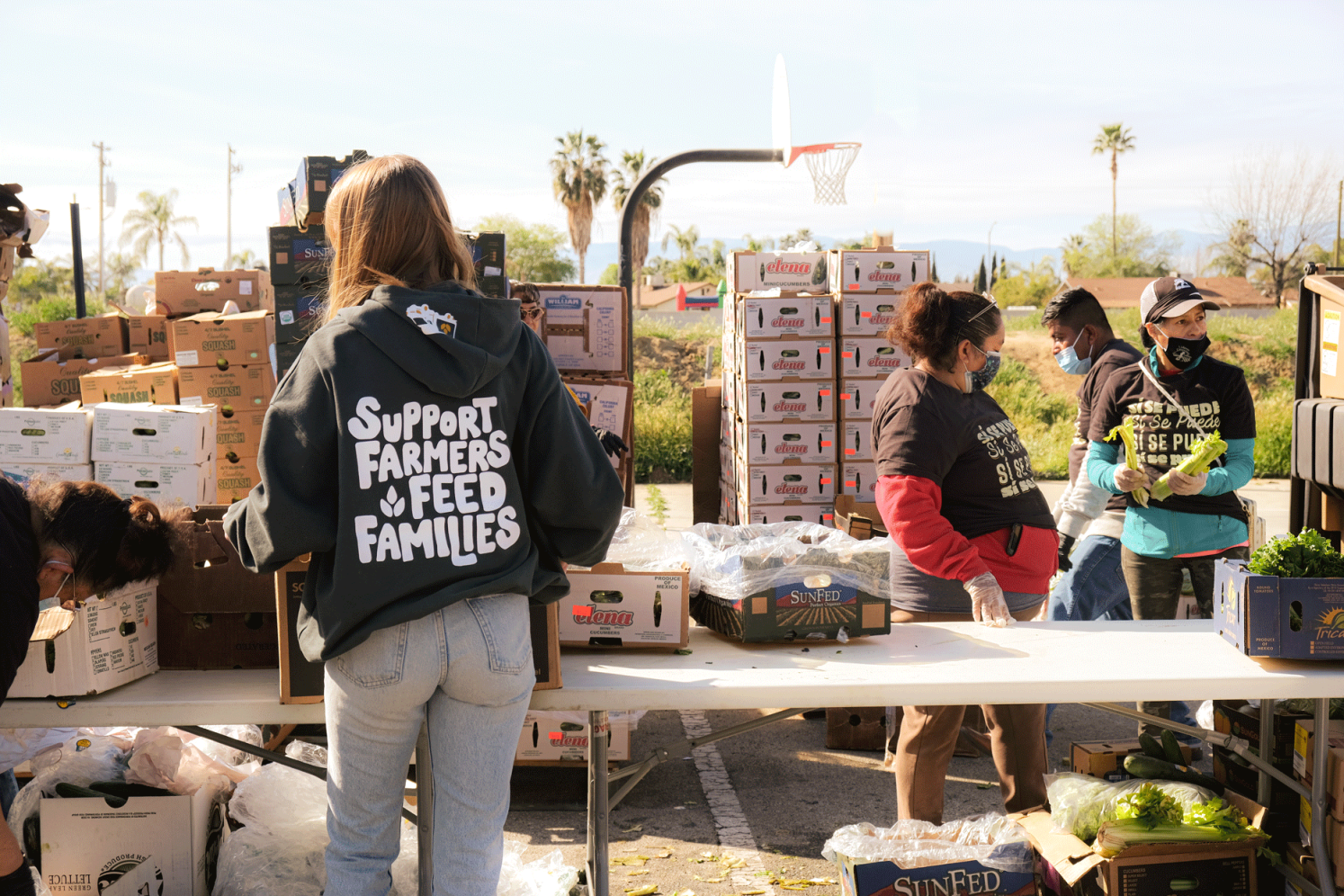
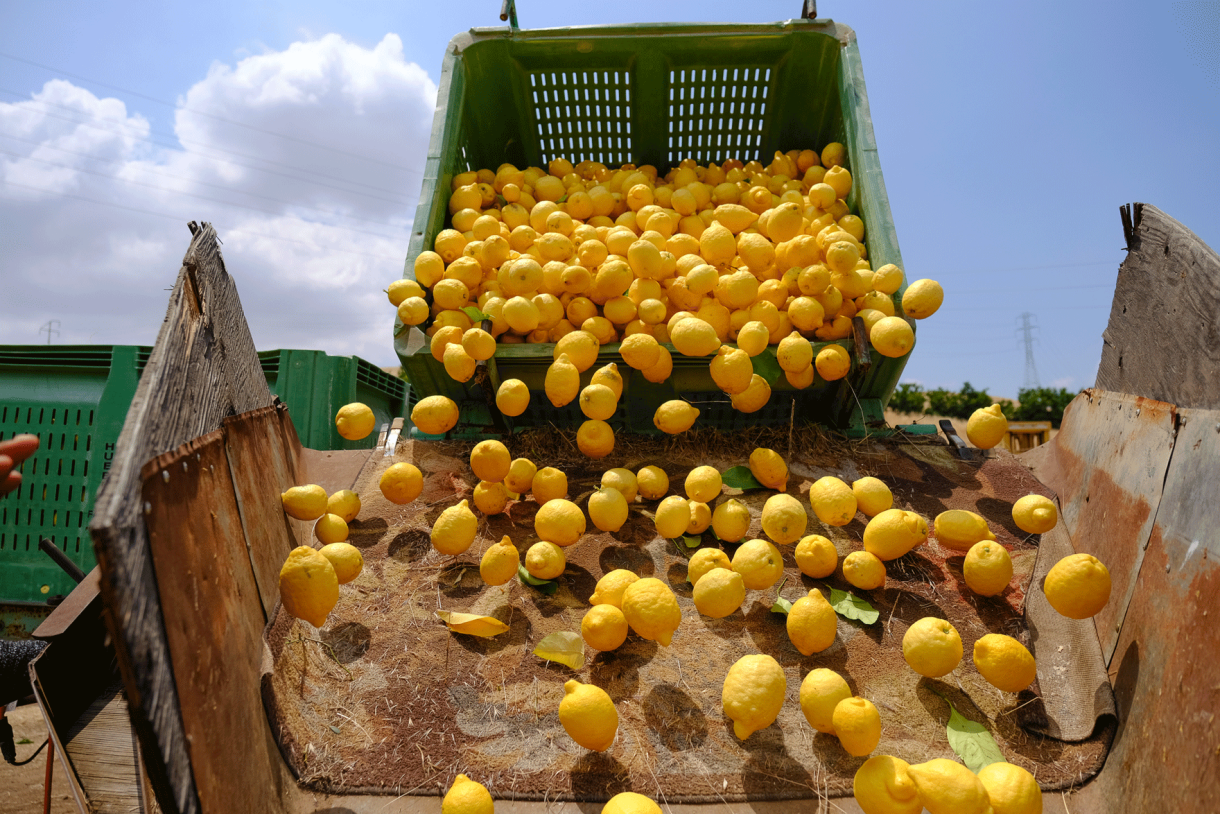
Podcast

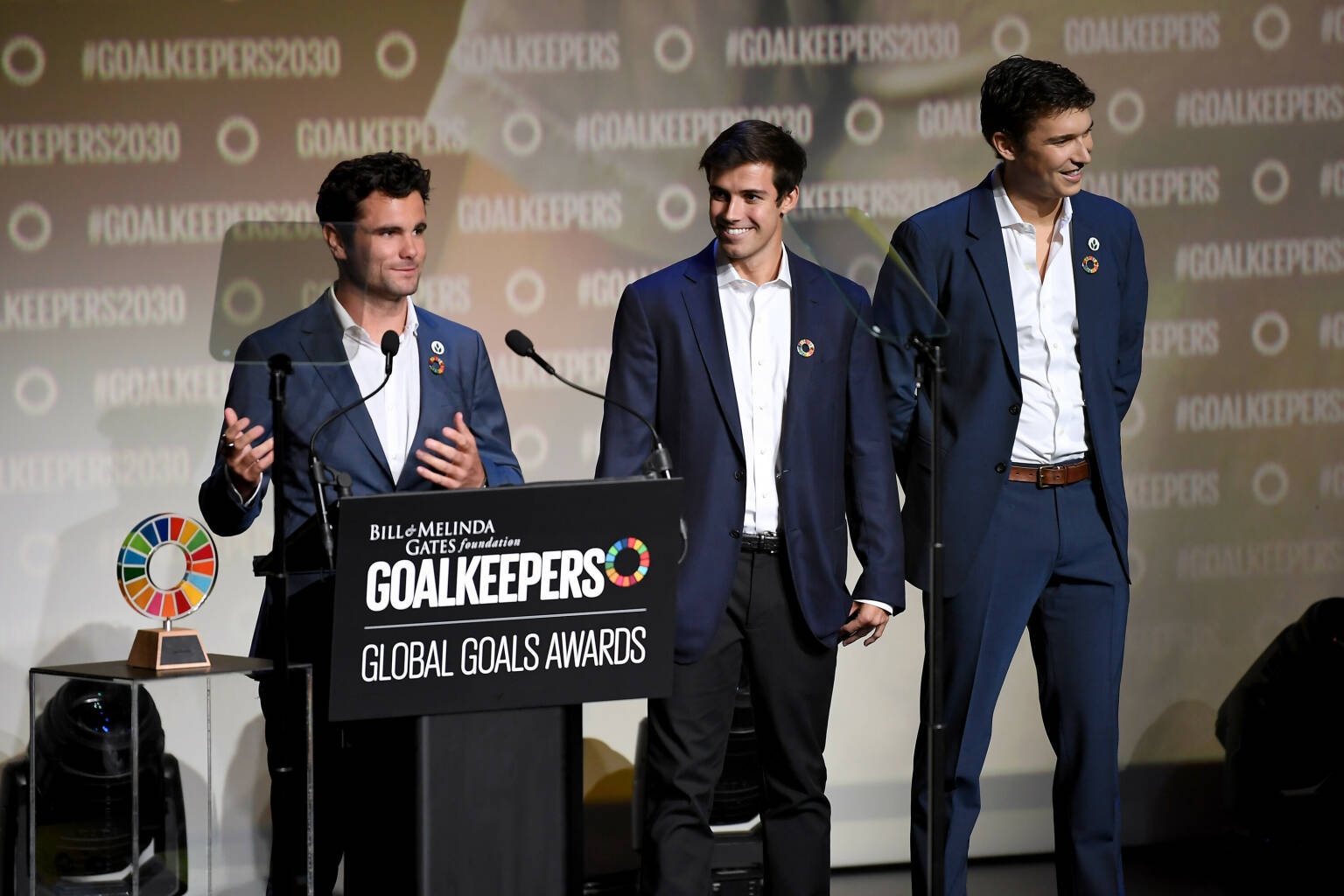
13 min
“The entire farming food system relies on trust, so you can only move at the speed of trust.”
“We woke up that next day and there was almost $100,000 in our bank account. That changed everything”
“When all the universities closed down in early 2020, we were sent home and told to stay in and wait for the storm to pass. We saw a health crisis unfold right in front of our eyes. There was so much going on. They were talking about converting universities into potential makeshift hospitals.” Supermarkets ran out of stock. There were millions of families flooding the food banks, sometimes waiting for hours in mile long lines, depending on a charitable food system that was never designed for a crisis. At the same time, farmers were being forced to throw away millions and millions of pounds of nutritious fresh food because they could no longer sell it to the schools, hotels and commercial restaurants that were all closed down overnight. “It felt like the world was collapsing, and the guidance was for us to watch it collapse from our window. And a lot of young people just didn’t buy that. We wanted to do something.”
Mid September 2023, The Farmlink Project won the Bill and Melinda Gates Foundation Global GoalKeepers Campaign award. They are the first U.S. based organization to ever win this global award.
“When I think about Farmlink’s impact in the future, I don't actually believe it's going to be about the meals that we delivered at all. I think it's going to be about what the students who have joined us will go on to do 10 to 15 years from now. They may be heading to the USDA, the World Food Program, starting their own Farmlink Projects, nonprofits or for-profit organizations. And I trust that's what's going to bring about real change. It won't be the food that we moved. That’s just a way to inspire people to create action and continue doing so. That multiplying effect is what I'm most excited about.”
Dream big, start small, move fast
With the Farmlink Project, Kanoff has been able to create a movement. “Someone on our team once said, ‘Dream big, start small, move fast,’ and that still resonates with me. That’s my advice to anyone looking to create an impact or start something: dream big. Come up with something that's worth working on, something that could potentially change things for the better. Keep that dream in mind, but then, at the same time, somewhat forget about it and start as small as possible. Figure out how you can test this tomorrow and actually get out the door. With Farmlink, we had this big dream of making the world's abundance of nutritious food accessible for everyone. But we started small, focussing on finding one farm with surplus and one food bank that needed food and then driving a U-Haul truck from A to B. The principle of breaking it down into the smallest actionable piece will help you get started. And then the last thing is to move fast. Time is your most valuable resource, so you better start now.”
“We grow enough food for everyone on the planet, yet one third is going to waste, while in the U.S. alone, 54 million Americans are facing food insecurity.”
Not a pandemic problem
During the pandemic, hundreds of students joined the Farmlink Project. It acted as a group of self-governing college students delivering millions of meals every week all around the country. Thirty million in total over the course of two years. “When things were slowly moving back to normal, the question that needed answering was, ‘Is this just a pandemic problem? Or is this a structural flaw in our food system?’ That’s when we started talking to farmers and learned that much of the surplus we were recovering had nothing to do with the pandemic. This was common practice. In the U.S., over 20 billion pounds of food goes to waste, just at the farm level, every single year. That was the supply we were tapping into. Obviously, the pandemic made food insecurity worse, but this has been a shadow problem for a long time that few seemed to care about. That’s when we said to ourselves, we have a simple, proven solution. Let's try and change this structurally.”
“I think the phase we are in now is even more exciting than when we started. During the pandemic we were responding to an acute crisis, but now we're working to build the future that we want to see for the world. Farmlink's moonshot is to make the world's abundance of nutritious food accessible for everyone. Rather than using the words 'food waste' or 'surplus food', we use the word abundance. We want to emphasize how amazing it is that our food system is able to produce enough food to feed a growing population. The question is, how can we make it accessible for everyone and avoid it going to waste?”

Recovering 1 billion pounds of food
“Today, we have a full time team of about 20 people who are focused on scaling up Farmlink’s food recovery operation. To date, we've recovered and delivered over 130 million pounds of fresh fruits and vegetables, primarily in the US, but also in Mexico and Canada. Our goal is to provide one billion pounds of fresh fruits and vegetables by the end of 2025. And honestly, I think that's just the tip of the iceberg for what's actually possible. There are many factors that influence if we will reach our goal. Some can help us accelerate while others slow us down.”
“One of the biggest barriers that we’ve encountered in our journey so far is that the entire farming food system runs on trust. You can only move at the speed of trust. Despite all this surplus that is going to waste, at the end of the day, we first have to build strong relationships with farmers and growers, to earn it. We need to show up, support our growers every day and provide them with the best, economically viable option to deal with their surplus. That means a lot of farm visits, meeting on their farm, shaking their hands, looking them in the eye and telling them that this isn't just some students’ hobby project. We also need to acknowledge that it takes a lot of investment for them. Farmers tend to have 10 things on their to-do list and only have time for two. That's their daily reality. For us, to make it to that priority list at all, we need to have a proposition that's valuable to them.”
The New York Times article
“At first, it was just my closest friends, college buddies and family members who joined the Farmlink team. Basically, it was a ragtag bunch of young people trying to pull this together. It was a tough start. We expected that every farmer we called would have something to offer. We were reading about all this massive surplus, seeing these images of hundreds of thousands of eggs that were being smashed every day, millions of gallons of milk being dumped. But the farmers we spoke to in those first days didn’t have any surplus to offer. It turned out that these smaller farmers that we were calling, the ones who had their website in place and their contact details listed online, were actually well-equipped to pivot their processes and switch their supply chains. Many people were calling them with ideas of repurposing their produce. In fact, it was the large commercial farmers that weren't set up for this crisis. They were the ones not ready to pivot and needed our attention.”
“For us, it really came to life at our local food bank. They put out a call for help, stating that they needed to get either more food or more capital to buy more food. As we didn't have any capital, we decided to look for ways to get more food. We reached out and asked them what they needed. It turned out they needed eggs, so we Googled ‘farms nearby,’ created a list, and just started calling farmers to see if we could find some surplus. It took probably 150 calls where people said no, and then on the 151st call a farmer finally had some surplus eggs. He said that if we would come pick them up, we could have them. We were not at all geared up for that. So, we simply rented a U-Haul truck, drove to the farm in San Jose, picked up the eggs, and delivered them to our local food bank. And from that the Farmlink Project was born.”
1 billion pounds of fresh produce by 2025
A better food system starts with a vision. In his podcast series Food Lab Talk, Google's Vice President of Workplace Programs, REWS, Michiel Bakker, interviews inspiring change makers working at the forefront of our most pressing food system challenges. Each month, Food Inspiration highlights one of these visionaries. The first season of Food Lab Talk focuses on reducing loss and waste in the food system and features James Kanoff, Co-Founder of The Farmlink Project.

Moniek de Jongh Courtesy of Farmlink Loraine Elemans
The Farmlink Project connects farmers to food banks, delivering millions of pounds of farm-fresh produce that would otherwise be wasted, to feed families in need. James Kanoff co-founded the Farmlink Project in 2020 while still a student at Stanford University. When the COVID-19 pandemic caused students to be sent home, Kanoff and his fellow classmates felt the urge to help their local communities. To date, the Farmlink Project has recovered and delivered over 130 million pounds of fresh fruits and vegetables.

“We posted about our initiative on social media and that sparked interest. More people started to reach out, asking how they could help and get involved as they saw the same thing happening in their community. So we hosted Zoom calls and simply inspired them to start calling farmers, start calling their local food banks to figure out what they needed. In early May 2020, The New York Times published an article about this dichotomy between all the food that was going to waste and millions of families going to this charitable food system that's not designed for this. They ended up including the Farmlink Project in it. At that moment things really took off. The funny thing is that we literally just stitched up a dinky website - only 12 hours before the article launched - that basically had our name on it and a button that said ‘donate if you want to help.’ We woke up that next day and there was almost $100,000 in our bank account, mainly the total from thousands of small five to ten dollar donations. That changed everything. All of a sudden we were able to pay truck drivers, many of whom were out of work at the time of the pandemic, to get the produce from A to B. The team shifted focus on coordinating logistics.”

Recovering 1 billion pounds of food
“Today, we have a full time team of about 20 people who are focused on scaling up Farmlink’s food recovery operation. To date, we've recovered and delivered over 130 million pounds of fresh fruits and vegetables, primarily in the US, but also in Mexico and Canada. Our goal is to provide one billion pounds of fresh fruits and vegetables by the end of 2025. And honestly, I think that's just the tip of the iceberg for what's actually possible. There are many factors that influence if we will reach our goal. Some can help us accelerate while others slow us down.”
“One of the biggest barriers that we’ve encountered in our journey so far is that the entire farming food system runs on trust. You can only move at the speed of trust. Despite all this surplus that is going to waste, at the end of the day, we first have to build strong relationships with farmers and growers, to earn it. We need to show up, support our growers every day and provide them with the best, economically viable option to deal with their surplus. That means a lot of farm visits, meeting on their farm, shaking their hands, looking them in the eye and telling them that this isn't just some students’ hobby project. We also need to acknowledge that it takes a lot of investment for them. Farmers tend to have 10 things on their to-do list and only have time for two. That's their daily reality. For us, to make it to that priority list at all, we need to have a proposition that's valuable to them.”
Not a pandemic problem
During the pandemic, hundreds of students joined the Farmlink Project. It acted as a group of self-governing college students delivering millions of meals every week all around the country. Thirty million in total over the course of two years. “When things were slowly moving back to normal, the question that needed answering was, ‘Is this just a pandemic problem? Or is this a structural flaw in our food system?’ That’s when we started talking to farmers and learned that much of the surplus we were recovering had nothing to do with the pandemic. This was common practice. In the U.S., over 20 billion pounds of food goes to waste, just at the farm level, every single year. That was the supply we were tapping into. Obviously, the pandemic made food insecurity worse, but this has been a shadow problem for a long time that few seemed to care about. That’s when we said to ourselves, we have a simple, proven solution. Let's try and change this structurally.”
“I think the phase we are in now is even more exciting than when we started. During the pandemic we were responding to an acute crisis, but now we're working to build the future that we want to see for the world. Farmlink's moonshot is to make the world's abundance of nutritious food accessible for everyone. Rather than using the words 'food waste' or 'surplus food', we use the word abundance. We want to emphasize how amazing it is that our food system is able to produce enough food to feed a growing population. The question is, how can we make it accessible for everyone and avoid it going to waste?”
“We posted about our initiative on social media and that sparked interest. More people started to reach out, asking how they could help and get involved as they saw the same thing happening in their community. So we hosted Zoom calls and simply inspired them to start calling farmers, start calling their local food banks to figure out what they needed. In early May 2020, The New York Times published an article about this dichotomy between all the food that was going to waste and millions of families going to this charitable food system that's not designed for this. They ended up including the Farmlink Project in it. At that moment things really took off. The funny thing is that we literally just stitched up a dinky website - only 12 hours before the article launched - that basically had our name on it and a button that said ‘donate if you want to help.’ We woke up that next day and there was almost $100,000 in our bank account, mainly the total from thousands of small five to ten dollar donations. That changed everything. All of a sudden we were able to pay truck drivers, many of whom were out of work at the time of the pandemic, to get the produce from A to B. The team shifted focus on coordinating logistics.”
The New York Times article
“At first, it was just my closest friends, college buddies and family members who joined the Farmlink team. Basically, it was a ragtag bunch of young people trying to pull this together. It was a tough start. We expected that every farmer we called would have something to offer. We were reading about all this massive surplus, seeing these images of hundreds of thousands of eggs that were being smashed every day, millions of gallons of milk being dumped. But the farmers we spoke to in those first days didn’t have any surplus to offer. It turned out that these smaller farmers that we were calling, the ones who had their website in place and their contact details listed online, were actually well-equipped to pivot their processes and switch their supply chains. Many people were calling them with ideas of repurposing their produce. In fact, it was the large commercial farmers that weren't set up for this crisis. They were the ones not ready to pivot and needed our attention.”
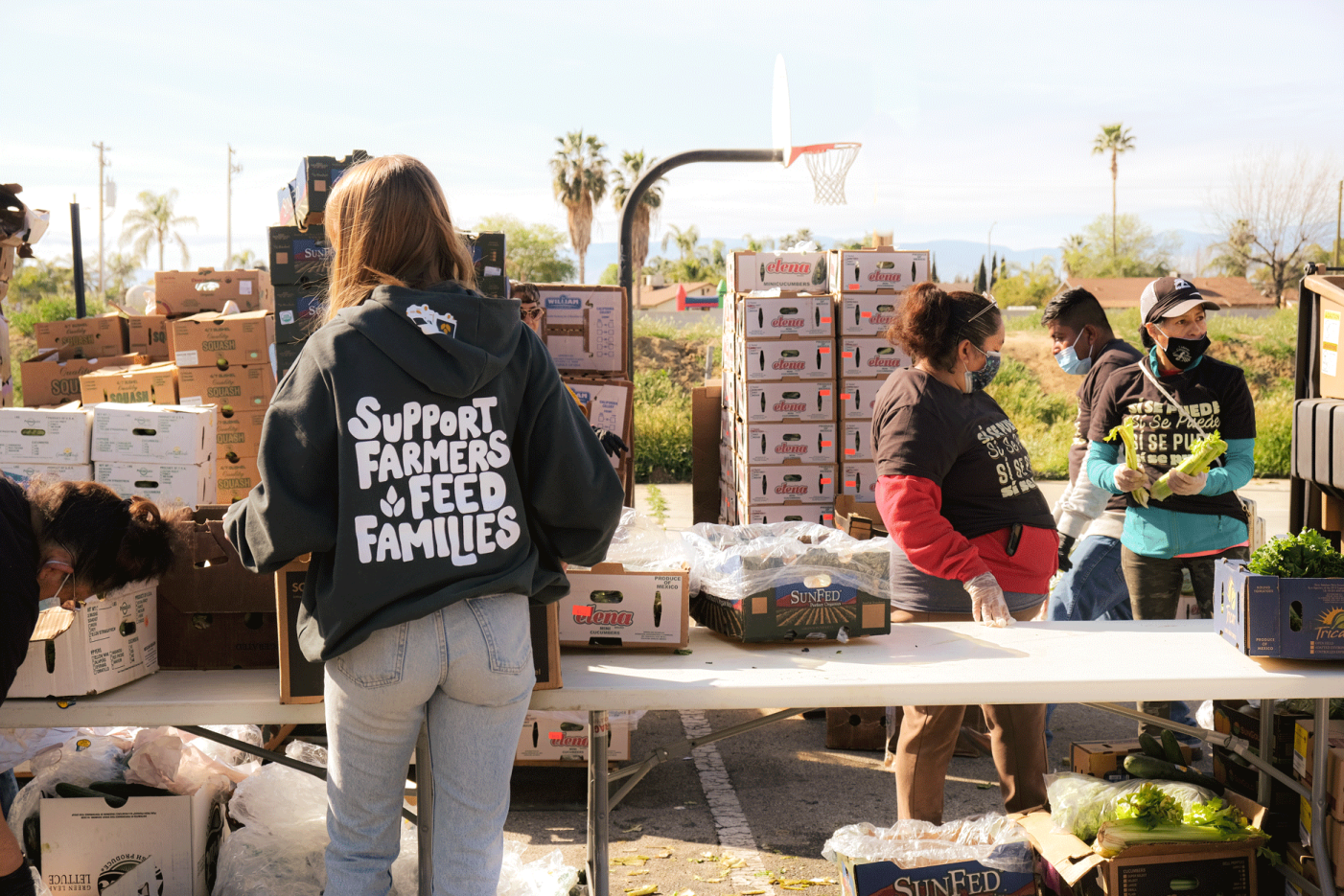
“For us, it really came to life at our local food bank. They put out a call for help, stating that they needed to get either more food or more capital to buy more food. As we didn't have any capital, we decided to look for ways to get more food. We reached out and asked them what they needed. It turned out they needed eggs, so we Googled ‘farms nearby,’ created a list, and just started calling farmers to see if we could find some surplus. It took probably 150 calls where people said no, and then on the 151st call a farmer finally had some surplus eggs. He said that if we would come pick them up, we could have them. We were not at all geared up for that. So, we simply rented a U-Haul truck, drove to the farm in San Jose, picked up the eggs, and delivered them to our local food bank. And from that the Farmlink Project was born.”
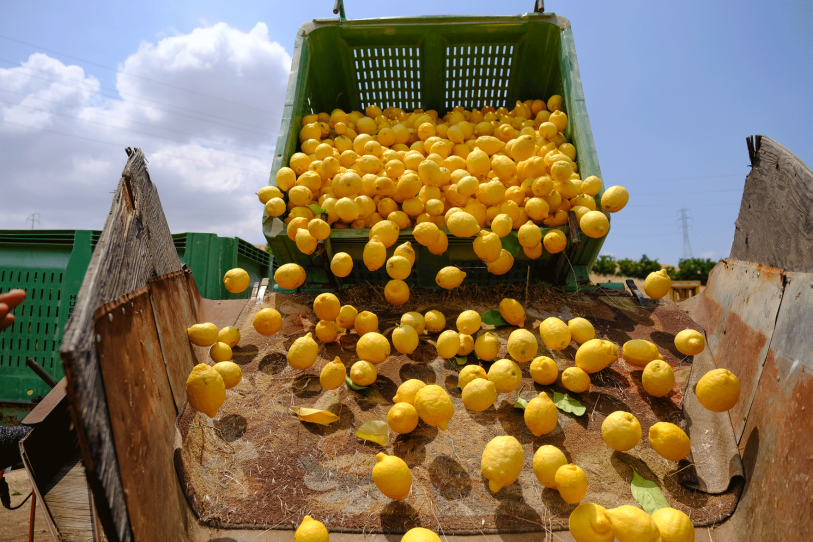
“We grow enough food for everyone on the planet, yet one third is going to waste, while in the U.S. alone, 54 million Americans are facing food insecurity.”
“We woke up that next day and there was almost $100,000 in our bank account. That changed everything”
Mid September 2023, The Farmlink Project won the Bill and Melinda Gates Foundation Global GoalKeepers Campaign award. They are the first U.S. based organization to ever win this global award.
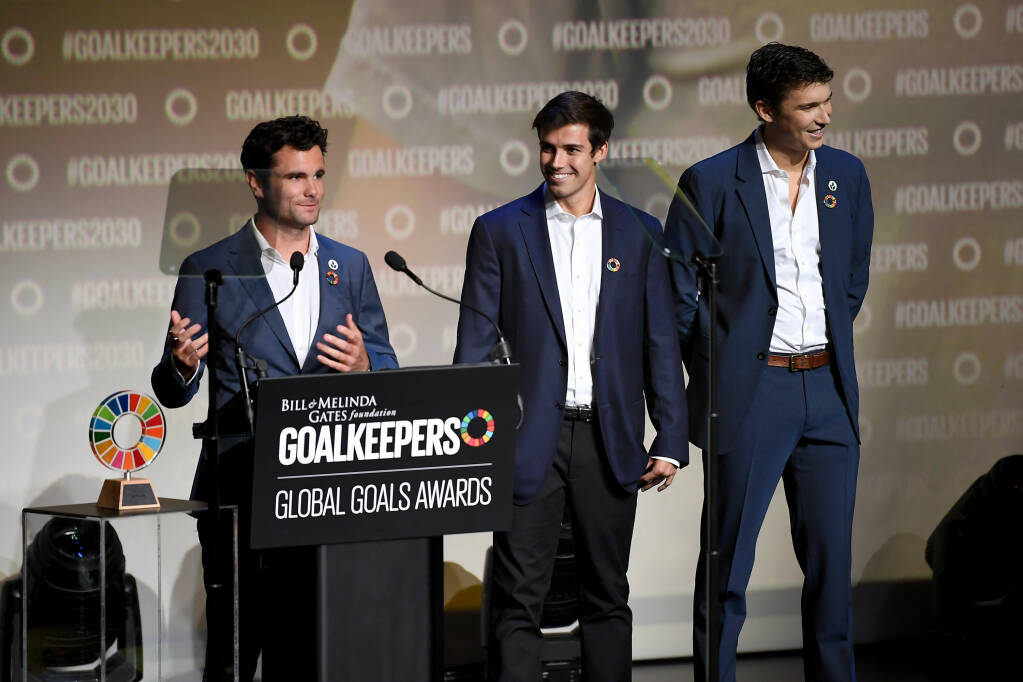
Dream big, start small, move fast
With the Farmlink Project, Kanoff has been able to create a movement. “Someone on our team once said, ‘Dream big, start small, move fast,’ and that still resonates with me. That’s my advice to anyone looking to create an impact or start something: dream big. Come up with something that's worth working on, something that could potentially change things for the better. Keep that dream in mind, but then, at the same time, somewhat forget about it and start as small as possible. Figure out how you can test this tomorrow and actually get out the door. With Farmlink, we had this big dream of making the world's abundance of nutritious food accessible for everyone. But we started small, focussing on finding one farm with surplus and one food bank that needed food and then driving a U-Haul truck from A to B. The principle of breaking it down into the smallest actionable piece will help you get started. And then the last thing is to move fast. Time is your most valuable resource, so you better start now.”
“The entire farming food system relies on trust, so you can only move at the speed of trust.”
“When all the universities closed down in early 2020, we were sent home and told to stay in and wait for the storm to pass. We saw a health crisis unfold right in front of our eyes. There was so much going on. They were talking about converting universities into potential makeshift hospitals.” Supermarkets ran out of stock. There were millions of families flooding the food banks, sometimes waiting for hours in mile long lines, depending on a charitable food system that was never designed for a crisis. At the same time, farmers were being forced to throw away millions and millions of pounds of nutritious fresh food because they could no longer sell it to the schools, hotels and commercial restaurants that were all closed down overnight. “It felt like the world was collapsing, and the guidance was for us to watch it collapse from our window. And a lot of young people just didn’t buy that. We wanted to do something.”
A better food system starts with a vision. In his podcast series Food Lab Talk, Google's Vice President of Workplace Programs, REWS, Michiel Bakker, interviews inspiring change makers working at the forefront of our most pressing food system challenges. Each month, Food Inspiration highlights one of these visionaries. The first season of Food Lab Talk focuses on reducing loss and waste in the food system and features James Kanoff, Co-Founder of The Farmlink Project.
The Farmlink Project connects farmers to food banks, delivering millions of pounds of farm-fresh produce that would otherwise be wasted, to feed families in need. James Kanoff co-founded the Farmlink Project in 2020 while still a student at Stanford University. When the COVID-19 pandemic caused students to be sent home, Kanoff and his fellow classmates felt the urge to help their local communities. To date, the Farmlink Project has recovered and delivered over 130 million pounds of fresh fruits and vegetables.
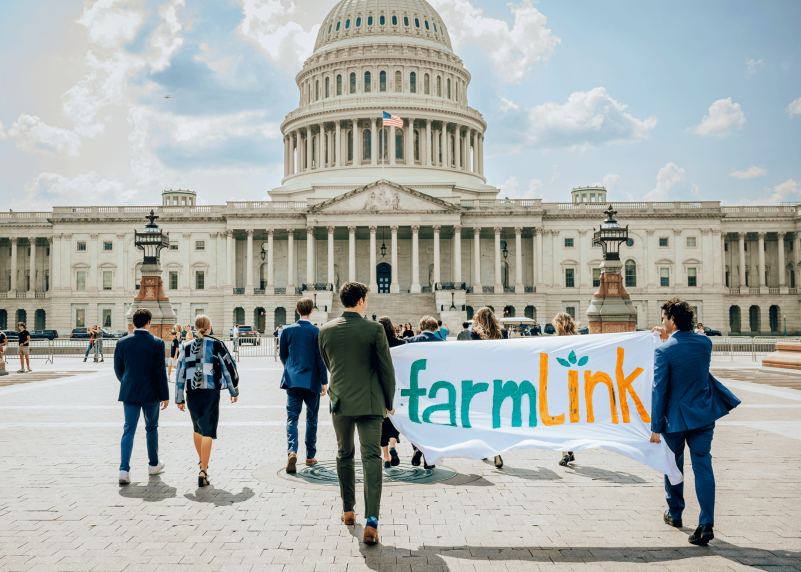

1 billion pounds of fresh produce by 2025
“When I think about Farmlink’s impact in the future, I don't actually believe it's going to be about the meals that we delivered at all. I think it's going to be about what the students who have joined us will go on to do 10 to 15 years from now. They may be heading to the USDA, the World Food Program, starting their own Farmlink Projects, nonprofits or for-profit organizations. And I trust that's what's going to bring about real change. It won't be the food that we moved. That’s just a way to inspire people to create action and continue doing so. That multiplying effect is what I'm most excited about.”
13 min










